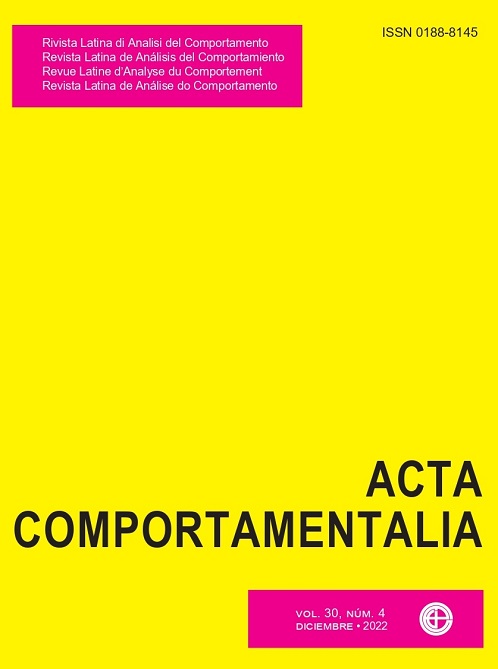Binge Eating in Rats: A Systematic Replication of Hagan and Moss (1997)
DOI:
https://doi.org/10.32870/ac.v30i4.83981Keywords:
food restriction, palatable food, overeating, binge eating, experimental models of psychopathologies, Behavior AnalysisAbstract
Different experimental models investigate the determinants environmental variables of eating patterns, including binge eating. In the present study, the effects of a history of food restriction with intermittent access to palatable food (in unlimited quantity) on body weight and consumption of regular and palatable food in rats
were evaluated. Daily consumption on the five days of the week and the average consumption of each subject on weekends was analyzed in baseline (LB) and for 12 weekly cycles involving 4 days of restriction or not of regular food and 3 days of ad lib access to regular or regular and palatable food (refeeding). The restriction was 75% in cycles 1 to 6 and 50% in cycles 7 to 12. The 12 subjects were exposed to one of four possible conditions: (a) restriction with access to palatable food (Rest/
Palat); (b) restriction with access to regular food only (Rest/Reg); (c) no restriction with access to palatable food (NRest/Palat) and (d) no restriction with access to regular food only (NRest/Reg). Restriction was based on the consumption of the control subject paired to subject in restriction chosen for showing similar consumption in LB. At the end of the cycles, a period of 30 days in the same conditions of LB
followed and then three consumption tests, involving 24-hour deprivation (Tests 1 and 2) or absence of deprivation (Test 3) and access to only regular food (Test 1) or regular and palatable (Tests 2 and 3). Taken together, the data showed that a history of restriction increased subsequent food consumption, especially when the refeeding involved palatable food. On the other hand, intermittent access to palatable food produced a progressive reduction in the consumption of regular food,
immediately for NRest/Palat and later for Rest/Palat, after its increase. In general, tests showed greater consumption by the Rest/Palat, even after normalization of the diet, which attests the importance of these variables in the production and maintenance of binge eating.
Downloads
Downloads
Published
How to Cite
Issue
Section
License

<a rel="license" href="http://creativecommons.org/licenses/by-nc-sa/4.0/"><img alt="Licencia de Creative Commons" style="border-width:0" src="https://i.creativecommons.org/l/by-nc-sa/4.0/88x31.png" /></a><br />Este obra está bajo una <a rel="license" href="http://creativecommons.org/licenses/by-nc-sa/4.0/">licencia de Creative Commons Reconocimiento-NoComercial-CompartirIgual 4.0 Internacional</a>.






